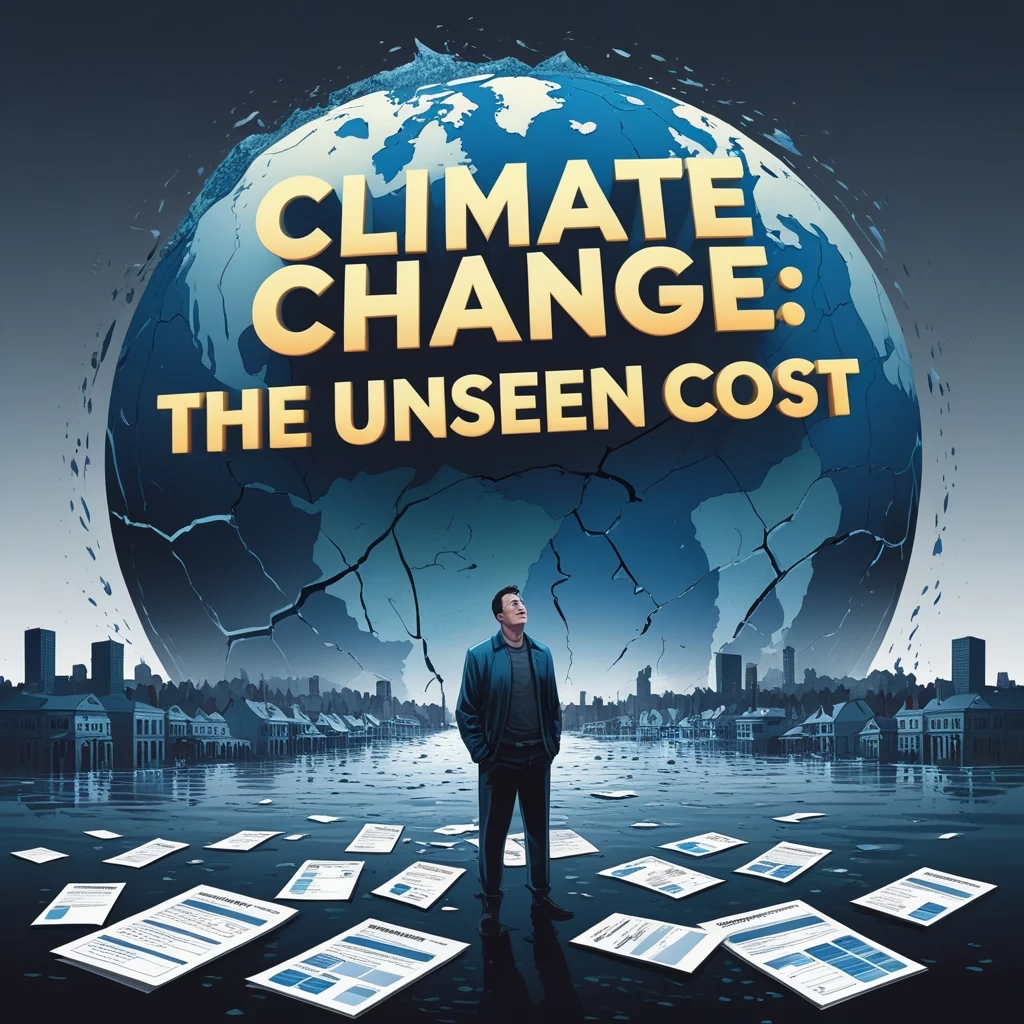Have You Noticed Your Insurance Costs Rising?
Climate change isn’t just an environmental phenomenon; it’s hitting our wallets too. Have you ever wondered why your insurance premiums seem to be creeping up each year? Well, the answer is deeply intertwined with the fickle nature of our planet’s shifting climate. As extreme weather events become more frequent and intense, insurance companies are feeling the squeeze and passing the costs onto us, the consumers.
Weather-related catastrophes like hurricanes, wildfires, and floods are becoming a regular occurrence, and they’re wreaking havoc on homes and businesses. As insurers face climactic events, they’re forced to pay out billions in claims. To manage this financial burden, they’re raising premiums or, in some cases, pulling out of high-risk areas altogether. This shift leaves many property owners in a bind, struggling to find affordable coverage.
Climate Change’s Financial Ripple Effect

It’s crucial to understand how climate change affects the financial stability of insurance companies and, by extension, our own finances. Here’s a breakdown of what we’re dealing with:
| Factor | Insurance Impact | Example |
|---|---|---|
| Increased Weather Events | Higher Claims | Hurricanes in Florida |
| Rising Sea Levels | Property Damage | Coastal Erosion |
| Temperature Extremes | Health Risks | Heatwaves in Europe |
| Wildfires | Property Destruction | California Fires |
| Flooding | Mass Evacuations | Monsoon Surges in Asia |
These events are leading to increased insurance payouts, and to offset these costs, companies are raising premiums. It’s a domino effect that starts with rising global temperatures and ends with us paying more each month for our policies.
Why Premiums Are Skyrocketing
Insurance companies are risk managers at heart. They calculate risk based on probabilities, and as climate change skews these probabilities, insurers must adapt their calculations. Historic data can no longer serve as an accurate predictor of future risks. For example, a region that was deemed a low-risk area for flooding in the past might now face significant threats due to shifting weather patterns. Consequently, insurers must adjust policies to reflect these new realities, inevitably leading to increased costs for policyholders.
“Climate change is a threat multiplier. It exacerbates existing vulnerabilities in communities and pushes the limits of our insurance capabilities.” – Climate Risk Expert
Risk Assessment and Geographic Impacts

One of the key challenges insurers face is accurately assessing and pricing risk. In areas prone to extreme weather, like Florida with its hurricane history or California with wildfires, insurance premiums are set to soar. Companies are not just factoring in the frequency of events but also the growing severity of each incident. Globally, this problem mirrors itself as various regions experience unique climate-related challenges, each with its own costs and risks.
Insurance companies employ complex models to evaluate risk, but climate change has introduced a significant amount of unpredictability into these models. The result? Increased operational costs and higher premiums as insurers try to accommodate for the unknown.
How Homeowners Are Coping with Higher Costs
With premiums on the rise, homeowners are being forced to find innovative ways to cope. Here are some strategies:
1- Elevating properties in flood-prone areas.
2- Installing fire-resistant materials in regions susceptible to wildfires.
3- Utilizing renewable energy sources to reduce dependency on traditional power grids.
4- Purchasing additional coverage like flood or earthquake insurance to ensure comprehensive protection.
These measures, while sometimes costly upfront, can lead to reduced premiums and better protection in the long run.
Business Insurance and Climate Challenges
It’s not just homeowners feeling the pinch. Businesses, especially those in climate-sensitive industries such as agriculture and real estate, are also grappling with rising insurance costs. The increased unpredictability of weather patterns means businesses need to secure more comprehensive insurance policies to cover potential losses.
For farmers, crop insurance rates are climbing as droughts and floods become more frequent, threatening yields. Real estate developers face new challenges when insuring properties in high-risk areas, complicating sales and development plans. Ultimately, these increased costs can lead to higher prices for consumers, impacting the economy at large.
Adaptation and Innovations in the Insurance Industry

The insurance industry, despite its challenges, is also adapting and innovating in response to climate change. Many companies are turning to technology, using big data and climate models to better predict risks. Some are offering incentives for policyholders who implement eco-friendly practices, such as solar panels or energy-efficient appliances. Others are beginning to incorporate climate risk assessments into their underwriting processes, acknowledging that sustainability is inseparable from fiscal responsibility.
While these innovations may initially incur costs, they hold the potential to create a more resilient insurance industry, better equipped to handle the ongoing impacts of climate change.
FAQ – Common Doubts
How is climate change impacting insurance companies financially?
Climate change is increasing the frequency and severity of natural disasters, leading to higher claims payouts by insurers, thus increasing financial pressure on these companies.
Are all regions experiencing the same rise in insurance costs?
No, areas more prone to extreme weather events, like coastal regions or places with a history of wildfires or floods, are seeing higher premiums than more stable areas.
Can homeowners do anything to lower their insurance premiums?
Yes, by implementing safety measures like installing flood defenses or fire-resistant materials, homeowners can often qualify for discounts on their insurance policies.
What role does technology play in adapting insurance models to climate change?
Technology aids in risk assessment through data analysis, allowing insurers to more accurately predict climate-related risks and price policies accordingly.
Is flood insurance separate from homeowners insurance?
In many cases, yes. Normal homeowners insurance does not cover flood damage, and separate flood insurance policies must be purchased, especially in high-risk areas.
How do rising insurance costs affect the economy?
Increased costs can lead to higher prices for goods and services as businesses pass on their increased insurance costs to consumers, potentially slowing economic growth.
Conclusion
The impact of climate change on insurance costs serves as a stark reminder of how interconnected our environment is with our economy. As weather events grow more severe, insurance companies are forced to adapt, passing higher costs onto consumers. However, this challenge presents an opportunity for innovation, urging both insurers and policyholders to adopt more sustainable practices. While the road ahead may be fraught with challenges, it is also ripe with opportunities for growth, adaptation, and resilience in the face of a changing world.





